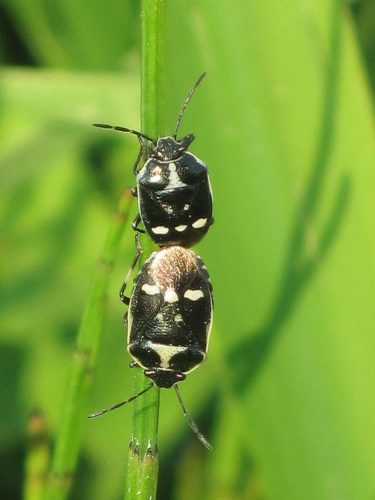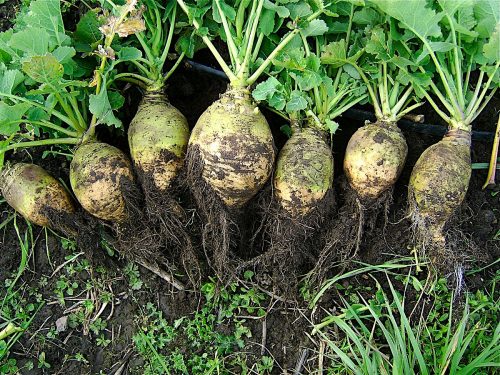Swedes belongs to the crucifers; the root is the edible part.
Also known as:
Swedish turnip
Neep
Turnip
Rutabaga (US)
You are viewing the mobile-adapted version of the page.
The one for tablets, laptop and desktop also provides general information, such as origin and cultivation.
Swede (Brassica napobrassica) – short for Swedish turnips – belongs to the crucifers (Brassicaceae). The root is the edible part.
Swedes, unlike kohlrabi, grows partially underground. Sow from late May to early July in open ground. Swedes likes airy, nutritious soil and plenty of moisture. Transplant in July and August; harvest in fall. A bird netting or a few twigs over the plants will help prevent damage from birds.
Swedes planted in July and August can be harvested from October to December. Do not leave them too long, as they will become hard and dry. Swedes are hardy and, like kale, become sweeter in flavor when exposed to frost due to the conversion of starch to sugar.
Bugs
Ragged, irregular holes in the leaf: snails and slugs.
Tunnels and holes: wireworm – larva of the common click beetle (Agriotes spp.).
Leaf is eaten: cabbage moth (Mamestra brassicae).
Transparent eggs on heart leaves, later legless larvae: Swede midge (Contarinia nasturtii).
Poor growth; maggots in the root: cabbage root fly (Delia radicum).
Deformed leaf: aphids.
Twisting and distortion of the leaf stems and foliage leading to death of the growing point especially in seedlings: Swede midge (Contarinia nasturtii).

Feeding on young plants and young shoots by a black bug with three white dots: Rape bug (Eurydema oleracea).
Fungi & diseases
Poor growth, plant wilting, swollen roots rotting away: Clubroot (Plasmodiophora brassicae).
Round, gray to dark brown spots up to + 1 cm on leaves. Small black dots develop on plant leaves, especially on the leaf underside. Then the spots enlarge and form concentric circles with a black center. The leaf tissue between the spots turns yellow: Alternaria leaf spot (Alternaria brassicae).
Large yellow, withered spots on leaves, veins turn black, followed by stem rot: black rot (Xanthomonas campestris).
Other
Glassy spots and a corky surface: lack of boron.

